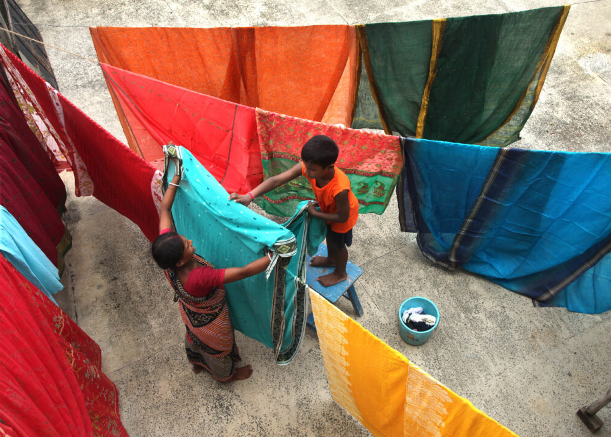Millions of hours spent daily on unpaid work: Evidence from Asia and the Pacific
Millions of hours spent daily on unpaid work: Evidence from Asia and the Pacific
From subsistence food production to looking after children and the elderly, 187 million hours are spent on unpaid production work every day in five countries in the Asia-Pacific,2 60 per cent of which are worked by women. With the vast majority of working-age persons engaged in unpaid production work 24 out of 28 million in the five countries analysed the scale and weight of collective hours spent warrant greater efforts to incorporate unpaid production work into any standard assessment of labour, productivity and economic growth outcomes. Increasingly, survey instruments do allow us to measure the scope and scale of unpaid production work and thus could be used to make such invisible work visible.
The 19th International Conference of Labour Statisticians (ICLS) resolution introduced the technical term own-use production work to define all inputs of labour involved in the production of goods and services for own final use. This concept captures the type of work that commonly accepted as unpaid production work, within which the provision of services is also known as unpaid care work. Unpaid production workers are defined as individuals of working age who conducted at least one hour of work in producing goods or providing services for own final use. The figure that follows shows the various forms of unpaid production work in greater detail.

While labour force participation among women in the Asia-Pacific is slightly higher than other regions, inactivity rates remain high in comparison to men. What’s more, young females are far more likely to be neither in employment nor in education (NEET) compared to young men, especially in South Asia. The counterpart is that more women engage in unpaid work than men. In all five countries with available data in Asia and the Pacific, the share of women who engaged in unpaid work is higher than men. In addition, more than two-thirds of working-age women (10 million) in these countries were doing unpaid work as their sole activity, while this ratio for men was only 41 per cent (or 5 million). Gender norms result in women spending disproportionally more time than men in these activities. In Nepal and Mongolia, two-thirds of all unpaid production work was done by women. The unequal distribution of the workload is particularly noticeable among the subcategory unpaid care work. On average, women performed 80 per cent of unpaid care work in these five countries. In Nepal, women carried out 85 per cent of daily unpaid care work, spending a total of 29 million hours a day (cumulatively) compared to 5 million hours spent by men.
|




